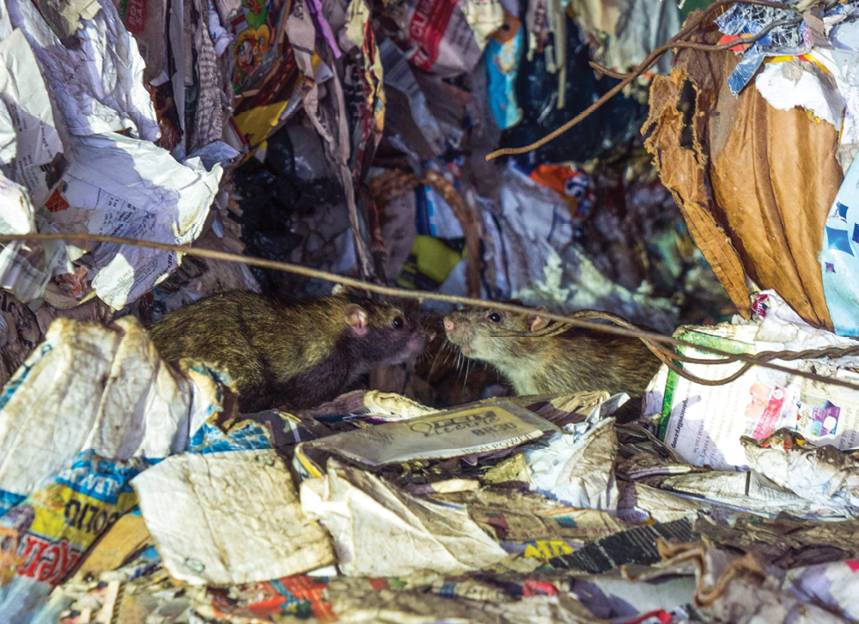Photo courtesy of Jeff Weir
By Jeff Weier
One of the first facts I learned when I started my career in the pest management industry was that rats are neophobic and mice are not. The belief was that rats are wary of new objects in their environment while mice are more inquisitive and tend to investigate new objects.
Recently, our company has been using motion-sensing cameras, or “game cameras,” and some of the new sensor systems available to the industry to track rodents. What we have seen has been a revelation regarding rodent behavior. Yes, rats are neophobic, but we never realized just how neophobic they are. This behavior is also much more complex than is presented in most texts. What we have learned is requiring us to rethink how we perform rodent control.
Rats are not just wary of new objects, but, in some cases, seem to be repelled by them. This phenomenon is long lasting; it may take weeks for a rat to interact with a device and, in some cases, they never will approach a new device. This leads to the question, “How do we control rodents when portions of the population will never interact with our control devices?”
By using sensor technology, we also have found that rodents will visit bait stations, yet not feed on the bait. So, not only do some rodent populations never interact with our devices, but some rodents interact in ways that we do not expect.
We have observed similar behaviors when it comes to rodenticides. There is a body of research that indicates that rodents communicate food preferences among families and, in some cases, colonies. We have all dealt with the rodents that only feed on one particular product in a grocery store. But why? With a camera I was able to capture the image on page 70 of two Norway rats communicating. What they were “saying,” I do not know, but communication was definitely occurring!
This behavior and communication may result in different populations having different food preferences. Our favorite rodenticides may not be the rodents’ favorite. What works in one situation may not work everywhere.
WHAT DO TO? Currently, many rodent control programs rely on exterior devices with rodenticide or traps and interior trapping devices. In the interest of consistency and aesthetics, we often will use the same devices/rodenticides. Several years ago, we learned about behavioral resistance in German cockroaches to baits. We now have developed programs of different bait formulations and bait rotation schemes to overcome this issue. We also have realized how quickly this behavioral resistance can occur, as opposed to the classic physiological resistance. We may need to apply the principles we learned with German cockroaches to rodents.
There are many different designs of bait stations and traps. Stations come in different shapes/sizes and have different sized openings. Traps are made of different materials and have different designs. All devices have a place and one of the first things we can do is to try different devices in different locations to determine which are preferred by the local population. Of course, traps always should be placed out unset first to accustom rodents to the new object, as well as to prevent trap shyness.
Rodenticides also need to be used differently. We need to offer a variety of baits to determine which one the population prefers. We need to rotate formulations, like with cockroach bait, to prevent behavioral resistance.
I have presented a few ideas to stimulate discussion, but these are not the only solutions. As an industry, we have always been at our best when confronted with challenges and, as professionals, we need to observe, learn and change to be effective when performing critical services such as rodent control.
Jeff Weier, B.C.E., is director of technical services and training for Sprague Pest Solutions, Tacoma, Wash.
This Tech Talk article was originally published in the January 2019 edition of PCT magazine.

